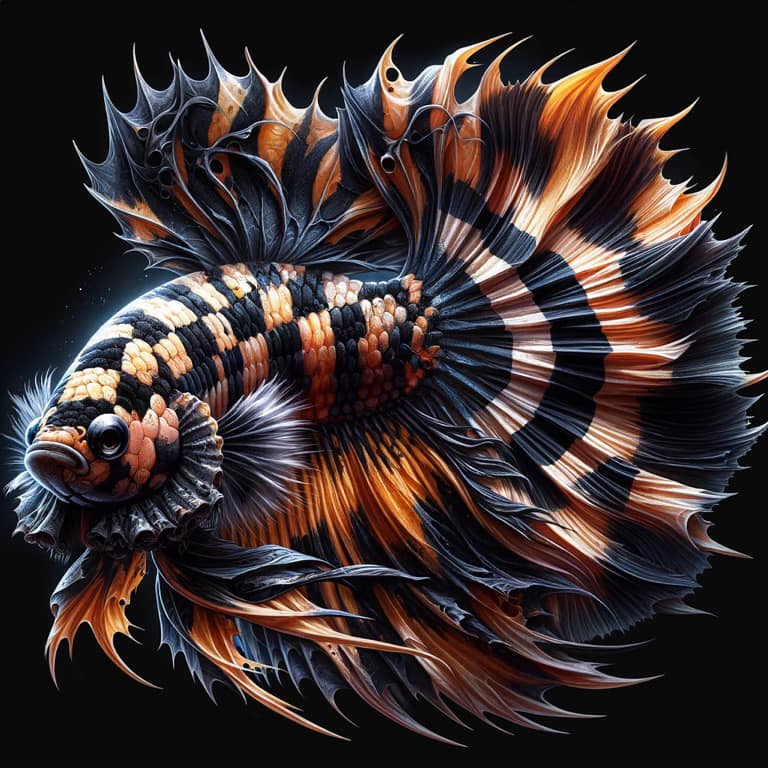Betta Fish Life Expectancy: Just How to Ensure Your Betta Lives Longer
Betta Fish Life Expectancy: Just How to Ensure Your Betta Lives Longer
Blog Article
How to Breed Betta Fish Efficiently: Professional Methods and Insights for Hobbyists Aiming To Expand Their Betta Collection
Reproducing Betta fish calls for a nuanced understanding of genetics and environmental conditions, making it important for hobbyists to come close to the process with both persistance and care. Producing an optimum reproduction setting, selecting the ideal sets, and observing the details of their courtship actions are foundational steps that can significantly affect the outcome.
Understanding Betta Fish Genetics
Comprehending the genetics of Betta fish is essential for effective reproduction, as it affects traits such as shade, fin form, and habits. Betta fish show a diverse range of colors and patterns, largely established by their genetic make-up.
In enhancement to coloration, fin morphology is one more considerable facet of Betta genetics (betta fish). The sizes and shape of fins are affected by numerous genetics, including those that establish whether the fins are short, long, or veil-shaped. Comprehending these genetic variations aids breeders anticipate the phenotypic outcomes of their spawn
Furthermore, behavior attributes such as aggression and territoriality can also be affected by genes. These behaviors play a crucial duty in the breeding procedure, as they can impact generating success and the total personality of the resulting fry. By comprehensively recognizing these genetic principles, breeders can make enlightened decisions, eventually boosting their reproduction programs and achieving preferable results.
Preparing the Breeding Atmosphere
Developing an optimum breeding atmosphere is crucial for the effective recreation of Betta fish. The initial action in preparing this atmosphere is to select an appropriate breeding tank, preferably varying from 5 to 10 gallons.
Next, consider the usage of a sponge filter or an air stone to supply mild water flow without producing solid currents that can emphasize the fish. It is necessary to set up plants or reproducing cones to provide concealing spots and promote comfort for the lady during the spawning process. Drifting plants, such as Java moss or water sprite, can additionally produce an extra native environment while facilitating bubble nest building by the man.
Prior to presenting the reproducing sets, make certain the water is conditioned and cost-free from unsafe chemicals, such as chlorine or hefty steels. betta fish. Regular water adjustments ought to be conducted to maintain ideal water top quality, improving the possibilities of successful breeding. With these prep work in location, the reproducing environment will certainly support the health and wellness and health of both Betta fish
Choosing Reproduction Pairs
Choosing the ideal breeding pairs is crucial for attaining successful Betta fish recreation. Healthy Betta fish display dynamic colors, clear eyes, and energetic habits.
Temperament is one more important factor to consider, as Betta fish are understood for their aggressive nature. It is suggested to choose a man and female that exhibit navigate to this website suitable temperaments to decrease tension throughout the breeding process. A calm male can urge a smoother courtship, while a lady that is also hostile may interfere with the procedure.
Hereditary history likewise plays a substantial role in the top quality of the children. Breeding fish that are genetically diverse can reduce the risk of hereditary health and wellness concerns and improve the total vigor of the fry. It is advantageous to investigate the family tree of both the man and lady, concentrating on desirable attributes such as fin kind, color scheme, and dimension.
The Reproduction Process
The reproduction process of Betta fish requires careful planning and attention to detail to make sure an effective result. Initially, it is crucial to prepare an ideal reproduction tank, ideally a 5-10 gallon aquarium with a temperature maintained at 78-80 ° F. The storage tank needs to be outfitted with a heating system, filter (preferably sponge type to avoid strong currents), and a lot of marine plants for the woman to hide.
As soon as the atmosphere is established, present the selected reproducing pair to the storage tank, allowing them to accommodate. Observe their habits; the man will certainly present fancy courtship rituals, including flaring his fins and constructing a bubble nest. If the lady reveals passion, she will present upright red stripes suggesting readiness for spawning.
When the woman is receptive, both will take part in a breeding welcome, throughout which the male fertilizes the eggs. It is critical to monitor their interactions carefully, as the man may end up being hostile. After spawning, get rid of the female to stop possible harm. The male will certainly have a tendency to the eggs, which normally hatch within 24-36 hours. Keeping ideal water problems during this duration is crucial for the development of healthy and balanced Betta fry.
Caring for Betta Fry

Feeding Betta fry is vital, as they call for a diet regimen high in healthy protein. Initially, they can be fed infusoria or fluid fry food, transitioning to carefully smashed top quality pellets as they expand. Feed small parts multiple times a day to encourage healthy growth without their explanation overloading the container with leftover food.

As they grow, monitor their growth closely and divide any kind of hostile individuals to avoid damage. By offering a nurturing environment and proper nutrition, enthusiasts can effectively elevate Betta fry right into lively, healthy and balanced fish, eventually improving their reproduction undertakings.
Final Thought
Effective Betta fish breeding calls for meticulous focus to genetic selection, ecological problems, and take care of the fry. By understanding the genetics of Betta fish and preparing a suitable reproduction environment, enthusiasts can boost the opportunities of creating vibrant, healthy children. Choosing suitable reproduction pairs and very closely keeping an eye on the courtship and spawning procedures are crucial. Giving optimal care for the fry ensures their healthy and balanced development, contributing to a growing Betta collection.
Report this page